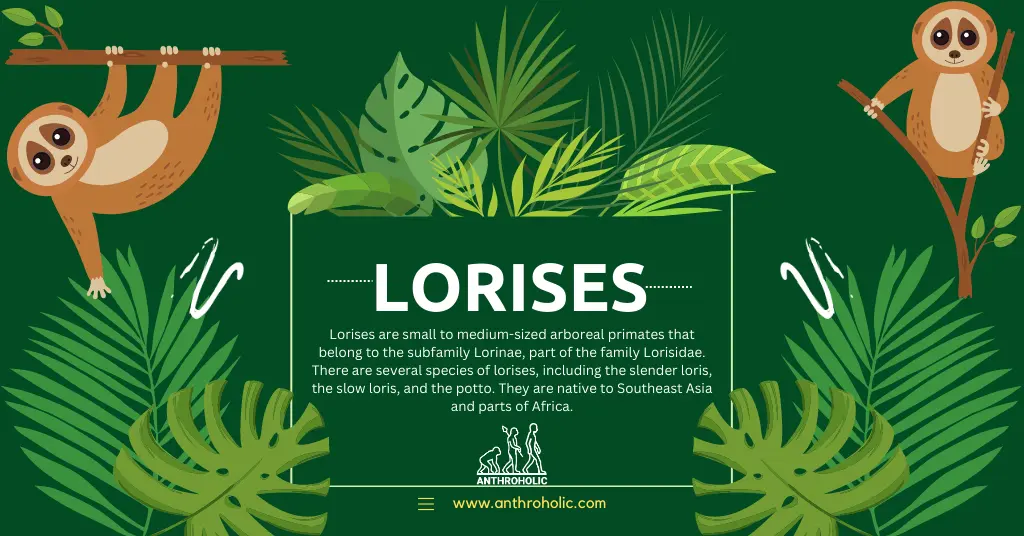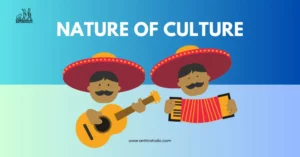AI Answer Evaluation Platform Live Now. Try Free Answer Evaluation Now
Lorises
Lorises are small to medium-sized arboreal primates that belong to the subfamily Lorinae, part of the family Lorisidae. There are several species of lorises, including the slender loris, the slow loris, and the potto. They are native to Southeast Asia and parts of Africa.

Physical Characteristics
All lorises have some physical characteristics in common:
- Long limbs for climbing
- A small, compact body
- Large, forward-facing eyes that provide binocular vision
- Second digit on the hand and foot reduced or absent
While they may seem cute and cuddly due to their slow movements and round eyes, these nocturnal creatures have a darker side. Some species of slow loris are one of the few venomous mammals on the planet.
Different Species of Lorises
The Lorisidae family consists of various species, including but not limited to:
- Slow Loris (Genus Nycticebus)
- Greater Slow Loris (Nycticebus coucang)
- Pygmy Slow Loris (Nycticebus pygmaeus)
- Slender Loris (Genus Loris)
- Gray Slender Loris (Loris lydekkerianus)
- Red Slender Loris (Loris tardigradus)
- Potto (Genus Perodicticus)
- Potto (Perodicticus potto)
The table below outlines the key distinguishing characteristics of these species:
| Species | Size (cm) | Weight (kg) | Distribution |
|---|---|---|---|
| Greater Slow Loris | 27-38 | 0.6-2 | Southeast Asia |
| Pygmy Slow Loris | 19-23 | 0.4-0.6 | Vietnam, Laos, China, and Cambodia |
| Gray Slender Loris | 20-25 | 0.1-0.2 | Sri Lanka and India |
| Red Slender Loris | 20-26 | 0.1-0.2 | Sri Lanka |
| Potto | 35-40 | 1-1.5 | Central and West Africa |
Unique Adaptations
One of the most striking adaptations in lorises is their slow and deliberate movement, which helps them remain unnoticed by predators and prey alike. Their venomous bite, present in slow loris species, is another defense mechanism that deters predators.
Lorises have a highly specialized diet, consisting primarily of:
- Insects
- Fruit
- Tree sap
- Bird eggs
- Small vertebrates
Anatomy and Physiology
Lorises have an extremely flexible spine compared to other primates, which allows them to navigate the treetops with a slow and steady grace. Their fingers and toes have a strong grip that enables them to hang upside down and move slowly and silently through the trees. Their movement has been described as a kind of “silent creeping.”
Venomous Mammals
Interestingly, lorises belong to the select group of venomous mammals. They secrete toxins from glands at the sides of their elbows. If threatened, a loris can take the toxin into its mouth and mix it with saliva. The animal’s bite can then cause painful swelling and even potentially deadly anaphylactic shock.
Behavior and Social Structure
Lorises are primarily solitary creatures, though they have been observed engaging in social grooming and occasionally sleeping in the same tree with others of their species. Their social structure is generally characterized by individual territories, which are marked by urine and defended vigorously.
Communication
Lorises communicate using a combination of olfactory signals and vocalizations. The exchange of calls is more prevalent during the night when these animals are most active.
Reproduction and Lifecycle
The reproductive habits of lorises vary by species, but generally, they have a gestation period between 6-9 months and typically give birth to a single offspring. The mothers park their young on branches while they forage, returning periodically to feed and groom them.
Lifespan
In the wild, lorises can live up to 15-20 years, though some in captivity have been reported to live up to 25 years. This long lifespan contributes to their slower pace of reproduction and growth, compared to other similarly-sized mammals.
Loris in Folklore and Popular Culture
In some cultures, lorises are seen as harbingers of death and are associated with spirits. Despite this, their undeniable cuteness has led to their popularity in media and as pets, contributing to the threats they face from illegal pet trade.
Conservation Status
Unfortunately, lorises face significant threats, including habitat loss and the illegal pet trade. The IUCN Red List classifies several loris species as “Endangered” or “Vulnerable”.
Conservation Efforts
Many organizations and governments are making strides to protect lorises and their habitats:
- Implementation of stricter laws against the illegal pet trade.
- Education programs about the importance of biodiversity.
- Habitat protection and restoration projects.
Ways to Help
Every individual can contribute to the preservation of these fascinating creatures:
- Raise awareness: Share information about lorises and the threats they face.
- Support conservation organizations: Many organizations work towards the conservation of lorises and their habitats. Consider donating or volunteering with these groups.
- Responsible tourism: If visiting areas where lorises live, choose eco-friendly accommodations, respect local guidelines, and never participate in wildlife petting or photography.
Conclusion
Lorises are a unique group of primates that have captivated scientists and animal lovers alike with their unusual characteristics and adaptations. While they face significant threats, ongoing conservation efforts offer hope for their survival. By understanding and appreciating these fascinating creatures, we can all play a role in their preservation.
References
- Nekaris, K.A.I., et al. (2013) “Slow Loris Trade: A Review of the Trade in Non-Native Lorises and Conservation Implications”. Endangered Species Research.
- Wiens, F., Zitzmann, A. (2003) “Social structure of the solitary slow loris Nycticebus coucang”. Journal of Zoology.
- The IUCN Red List of Threatened Species. (n.d.). Retrieved from https://www.iucnredlist.org/
- “Loris Facts: The Big Picture”. (n.d.). Little Fireface Project. Retrieved from http://www.nocturama.org/en/loris-facts-the-big-picture/
- Fitch-Snyder, H., Schulze, H., & Larson, L. (2001) “Management of lorises in captivity”. International Zoo Yearbook.
- Nekaris, K. A. I., & Bearder, S. K. (2007) “The lorisiform primates of Asia and mainland Africa”. Primates in Perspective.
- Starr, C., Nekaris, K. A. I., Leung, L. (2011) “Field surveys of the Vulnerable pygmy slow loris Nycticebus pygmaeus using local knowledge in Mondulkiri Province, Cambodia”. Oryx.
- “Loris Facts: The Big Picture”. (n.d.). Little Fireface Project. Retrieved from http://www.nocturama.org/en/loris-facts-the-big-picture/
- Munds, R., Nekaris, K. A. I., Ford, S. M. (2013) “Taxonomy of the Bornean slow loris, with new species Nycticebus kayan”. American Journal of Primatology.




